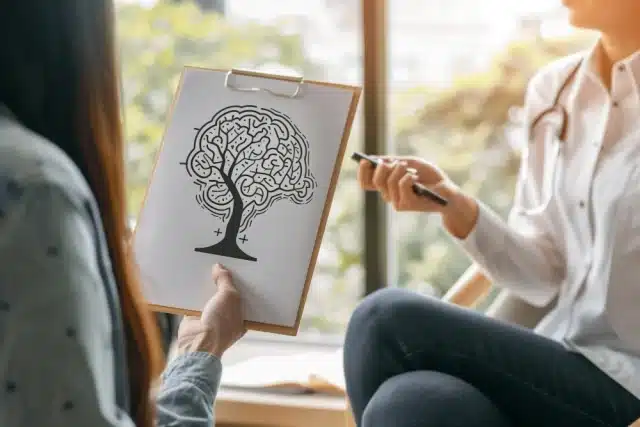Introduction
Social media has become an integral part of daily life, particularly for adolescents. Platforms like Instagram, TikTok, Snapchat, and Facebook allow young people to connect, share, and express themselves in ways that were unimaginable a few decades ago. While social media offers numerous benefits, such as fostering social connections and providing a platform for self-expression, it also poses significant risks to adolescent mental health. This article explores the impact of social media on adolescent mental health, examining both the positive and negative effects and offering insights into how parents, educators, and adolescents themselves can navigate this complex landscape.
The Double-Edged Sword of Social Media
Positive Effects on Mental Health
Social media can have positive effects on adolescent mental health when used appropriately. For many teens, these platforms provide a sense of community and belonging, especially for those who may feel isolated in their offline lives. According to the American Psychological Association (APA), social media can be a source of emotional support, helping adolescents connect with peers who share similar interests, experiences, or struggles.
Moreover, social media can serve as a valuable resource for mental health information. Many platforms host communities dedicated to mental health awareness, offering support and advice on dealing with issues like anxiety, depression, and stress. The ability to access mental health resources and peer support online can empower adolescents to seek help and reduce the stigma associated with mental health challenges.
Negative Effects on Mental Health
Despite these benefits, the negative impact of social media on adolescent mental health is a growing concern. One of the most significant issues is the pressure to conform to unrealistic standards of beauty, success, and lifestyle, which are often perpetuated by social media influencers and curated content. The constant comparison to others can lead to feelings of inadequacy, low self-esteem, and body dissatisfaction. A study published in the *Journal of Adolescent Health* found that higher levels of social media use were associated with increased body image concerns and depressive symptoms in adolescents.
Cyberbullying is another serious issue linked to social media use. The anonymity and reach of social media platforms make it easier for individuals to engage in bullying behavior, which can have devastating effects on an adolescent’s mental health. The Cyberbullying Research Center reports that approximately 34% of adolescents have experienced cyberbullying, which can lead to increased anxiety, depression, and even suicidal ideation.
Additionally, excessive social media use can disrupt sleep patterns, which is crucial for adolescent development and mental well-being. The blue light emitted by screens can interfere with the production of melatonin, the hormone that regulates sleep. Poor sleep quality is linked to a range of mental health issues, including mood swings, irritability, and cognitive difficulties.
Social Media and the Adolescent Brain
The Neuroscience of Social Media Use
Adolescence is a critical period for brain development, and the way social media interacts with the developing brain is a topic of growing research interest. The adolescent brain is particularly sensitive to social rewards, such as likes, comments, and shares on social media. These rewards activate the brain’s dopamine system, which is involved in pleasure and reward processing. The *Journal of the American Medical Association* (JAMA) Pediatrics suggests that this can make social media use highly addictive, as adolescents may become increasingly driven to seek out these social rewards.
The Impact on Emotional Regulation
Frequent social media use can also impact adolescents’ ability to regulate their emotions. The constant exposure to emotionally charged content, whether it’s uplifting or distressing, can overwhelm an adolescent’s emotional regulation systems. Over time, this can contribute to emotional instability and difficulties in managing stress. Moreover, the fear of missing out (FOMO), which is often exacerbated by social media, can lead to feelings of anxiety and restlessness.
Strategies for Healthy Social Media Use
Encouraging Mindful Social Media Use
To mitigate the negative impact of social media on adolescent mental health, it’s essential to encourage mindful social media use. This involves being aware of the time spent on social media and the types of content consumed. Parents and educators can help adolescents develop healthy habits by setting boundaries around social media use, such as limiting screen time and encouraging breaks from social media.
Promoting Positive Online Behaviors
Promoting positive online behaviors is another key strategy. This includes encouraging adolescents to use social media to connect with supportive communities, engage in positive interactions, and seek out educational and inspirational content. It’s also important to educate adolescents about the risks of cyberbullying and how to respond to negative online behavior.
Fostering Offline Connections
While social media can be a valuable tool for staying connected, it’s crucial to balance online interactions with offline connections. Encouraging adolescents to engage in face-to-face social activities, pursue hobbies, and spend time outdoors can help them build a well-rounded and fulfilling life. These offline experiences are essential for developing social skills, emotional resilience, and a strong sense of self-worth.
Conclusion
Social media is a powerful tool that can both positively and negatively impact adolescent mental health. While it offers opportunities for connection, self-expression, and access to mental health resources, it also poses risks such as cyberbullying, social comparison, and addiction. By fostering mindful social media use, promoting positive online behaviors, and encouraging a balance between online and offline activities, we can help adolescents navigate the challenges of social media and support their mental health and well-being.
References
- American Psychological Association. (2020). The Impact of Social Media on Mental Health. Retrieved from [APA](https://www.apa.org/)
- Journal of Adolescent Health. (2019). Social Media Use and Mental Health: A Review. Retrieved from [ScienceDirect](https://www.sciencedirect.com/journal/journal-of-adolescent-health)
- Cyberbullying Research Center. (2021). Cyberbullying Statistics. Retrieved from [CRC](https://cyberbullying.org/)
- Journal of the American Medical Association Pediatrics. (2018). The Neuroscience of Social Media and Adolescent Brain Development. Retrieved from [JAMA Pediatrics](https://jamanetwork.com/journals/jamapediatrics)





